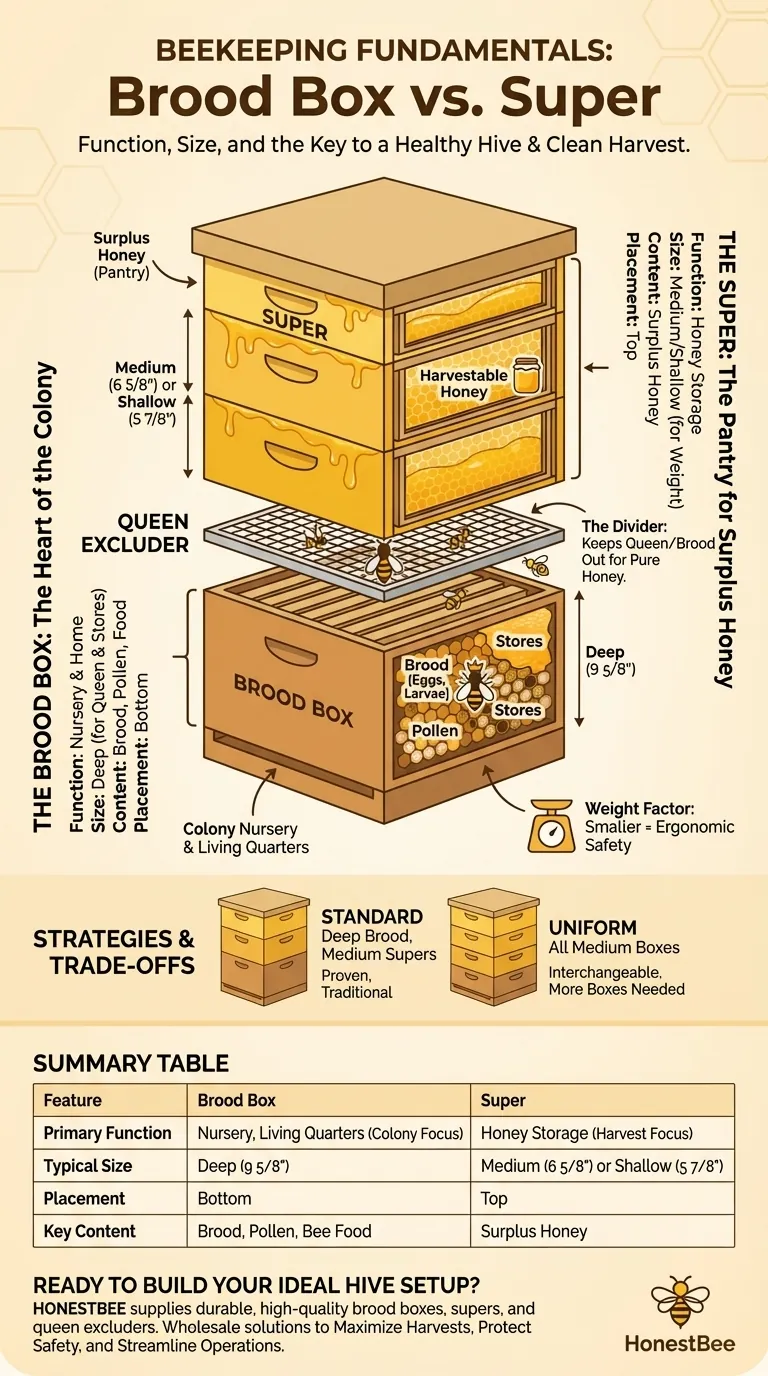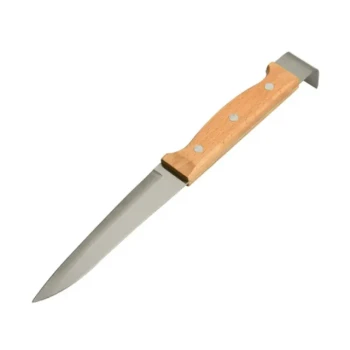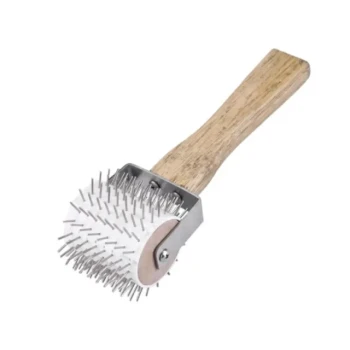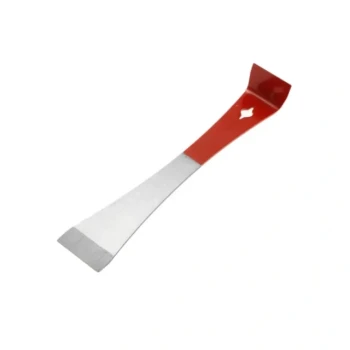In beekeeping, the fundamental difference is one of function and size. A brood box is the deep, lower section of the hive that serves as the colony's nursery and living quarters where the queen lays eggs. A super is a typically shallower box placed on top, designed specifically for the bees to store the surplus honey that the beekeeper will eventually harvest.
The distinction between a brood box and a super is not just about equipment; it's about separating the colony's core living space from the beekeeper's harvestable pantry. This separation is the key to both a healthy hive and a clean honey crop.

The Brood Box: The Heart of the Colony
The brood box, or "hive body," is the engine room of the beehive. It is the permanent home for the colony and is managed for the health of the bees, not for honey collection.
Primary Function: The Nursery
The brood box's main purpose is to house the queen and give her ample space to lay eggs. This is where the colony raises its young—the "brood"—which consists of eggs, larvae, and pupae. It also contains the pollen and honey stores the bees need to feed themselves and survive the winter.
Typical Size and Configuration
Brood boxes are almost always deep boxes, which in a standard Langstroth hive are 9 5/8 inches tall. This large volume is crucial to accommodate a productive queen's laying capacity and the substantial food stores a colony requires year-round. A hive typically has one or two deep brood boxes stacked at the bottom.
Placement in the Hive
The brood box is always the bottom-most box in the hive stack. This aligns with the bees' natural tendency to store food above their living quarters and expand their nest upwards.
The Super: The Pantry for Surplus Honey
"Super" is short for "superstructure," meaning it is placed "over" or "above" the main hive body. Its sole purpose is to collect excess honey that the beekeeper can harvest.
Primary Function: Honey Storage
Worker bees will fill the super with honey only after the brood chamber's needs are met. This is their surplus storage, acting as the hive's pantry. Because it is intended for human consumption, you want to keep it free of eggs and brood.
Typical Size and Configuration
Supers are typically medium (6 5/8 inches) or shallow (5 7/8 inches) boxes. While you can use a deep box as a super, it is rarely done.
Why They Are Smaller
The primary reason for using smaller boxes is weight. A full deep box of honey can weigh 80-90 pounds, making it extremely difficult to lift. A medium super full of honey weighs a more manageable 40-50 pounds, protecting the beekeeper's back during inspections and harvesting.
The Key Divider: The Queen Excluder
To maintain the strict separation between the brood nest and the honey pantry, many beekeepers use a queen excluder.
What It Is
A queen excluder is a flat grid of wire or plastic. The gaps are large enough for worker bees to pass through easily but too small for the larger queen and drones.
Its Purpose: Keeping Brood Out of the Honey
By placing an excluder between the top brood box and the first honey super, you prevent the queen from moving up and laying eggs in your honey frames. This ensures the honey you harvest is pure and free of developing bees, which vastly simplifies the extraction process.
Understanding the Trade-offs
While the deep-brood-box and medium-super model is standard, it's not the only approach. Understanding the alternatives reveals the core principles at play.
The Uniform Box Size Strategy
Some beekeepers choose to use all medium boxes for both brood and supers. The primary advantage is that all frames and boxes are interchangeable, simplifying equipment management. The trade-off is that you will need more boxes (typically three mediums) to create a brood chamber with adequate volume for the queen.
The Weight Factor Is Non-Negotiable
The most common mistake new beekeepers make is underestimating the weight of honey. The decision to use smaller supers is almost entirely a practical one based on ergonomics and physical safety.
When a Super Becomes a Brood Box
If you choose not to use a queen excluder, the queen is free to travel upwards. She may begin laying eggs in your honey supers, effectively turning that super into an extension of the brood chamber. This isn't harmful to the bees, but it means that box can no longer be harvested for clean honey.
Making the Right Choice for Your Hive
Your equipment choices should align with your physical ability and management style.
- If your primary focus is a traditional, proven setup: Use one or two deep boxes for brood and medium boxes for honey supers, separated by a queen excluder.
- If your primary focus is minimizing heavy lifting: Use all medium boxes for both the brood chamber and honey supers for a lightweight, interchangeable system.
- If your primary focus is maximizing a clean honey harvest: Always use a queen excluder to guarantee your supers contain only honey, not brood.
Understanding this functional division of labor within the hive is the first step toward becoming a confident and effective beekeeper.
Summary Table:
| Feature | Brood Box | Super |
|---|---|---|
| Primary Function | Colony's nursery and living quarters | Honey storage for harvest |
| Typical Size | Deep (9 5/8") | Medium (6 5/8") or Shallow (5 7/8") |
| Placement | Bottom of the hive stack | On top of the brood box(es) |
| Key Content | Brood (eggs, larvae), pollen, bee food | Surplus honey |
Ready to Build Your Ideal Hive Setup?
Whether you're a commercial apiary or a beekeeping equipment distributor, the right equipment is the foundation of a productive and healthy operation. HONESTBEE supplies the durable, high-quality brood boxes, supers, and queen excluders you need to succeed.
We provide wholesale-focused solutions to help you:
- Maximize Honey Harvests with the correct super configurations.
- Protect Beekeeper Safety with appropriately sized, manageable equipment.
- Streamline Your Operations with reliable, interchangeable components.
Let's discuss your specific needs. Contact our wholesale team today to get the right supplies for your business.
Visual Guide

Related Products
- HONESTBEE Advanced Ergonomic Stainless Steel Hive Tool for Beekeeping
- HONESTBEE Professional Long Handled Hive Tool with Precision Cutting Blade
- HONESTBEE Professional Multi-Functional Hive Tool with Ergonomic Wood Handle
- Multi-Function Plier-Style Frame Grip Hive Tool
- Professional Stainless Steel Pry-Bar Hive Tool
People Also Ask
- Why is it important to compare the progress of different hives? A Beekeeper's Key Diagnostic Tool
- What is the hole in a hive tool for? A Multi-Tool for Apiary Repairs and Maintenance
- What are the features of a regular hive tool? The Essential Multi-Tool for Every Beekeeper
- How should beekeepers handle bees when using a hive tool? Master Calm, Deliberate Techniques
- What are the basic tools for beekeeping? Essential Starter Kit for Safe & Successful Hive Management



















